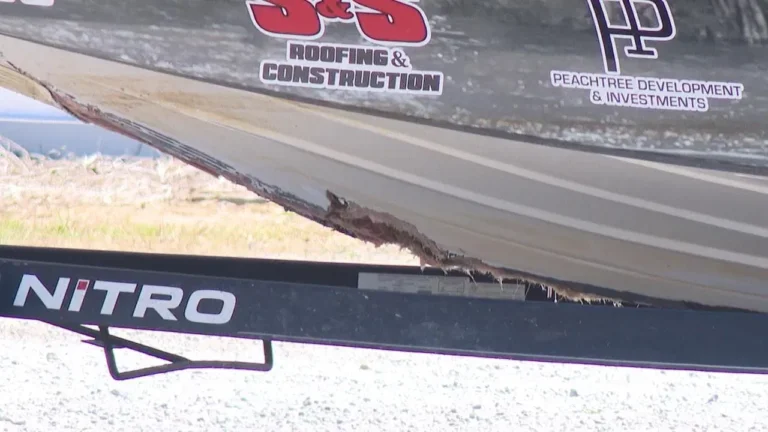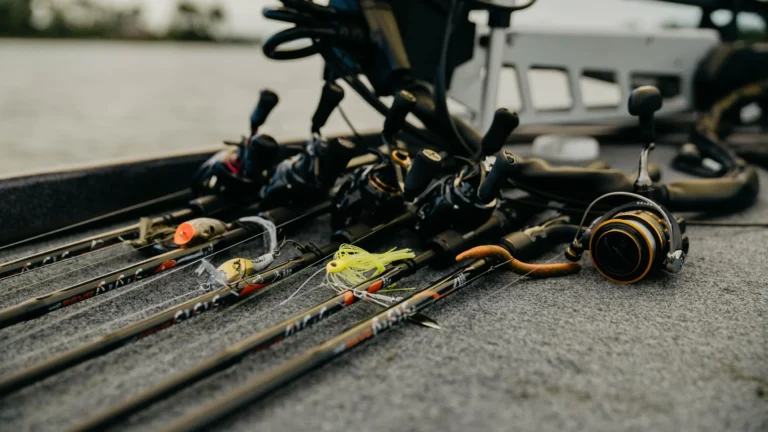Fishing in small ponds can be one of the most rewarding experiences for bass anglers. The peaceful environment, coupled with the challenge of locating and catching bass in a confined space, offers a unique opportunity for both beginners and seasoned anglers alike. However, finding bass in smaller bodies of water can sometimes be tricky. In this post, we’ll cover the best strategies to locate bass in small ponds, giving you the tools to improve your success and have more productive outings.
Why Bass Are in Small Ponds
Before we dive into specific tips, it’s important to understand why bass thrive in small ponds. Largemouth bass, the most common species in ponds, are opportunistic predators that prefer areas with ample cover, food, and oxygen. In small ponds, bass are often concentrated in certain areas, making them easier to find once you know where to look. These fish seek out environments that offer protection and abundant food sources, especially in the warmer months when they are most active.
Tip 1: Focus on Shallow Water Areas
In smaller ponds, bass often stay in shallow water, particularly during the spring and summer months when they are actively feeding and spawning. Shallow areas provide cover from predators and warmth, which is crucial for bass during colder seasons.
- Shallow Flats: Look for shallow areas around the edges of the pond where the water is warmer. These flats can be full of submerged vegetation, rocks, or fallen trees, all of which are great for bass to hide and ambush prey.
- Weed Beds: Bass love to hide in aquatic vegetation such as lily pads, grass beds, and submerged weeds. These areas not only provide cover but also attract baitfish. Use your eyes to scan for these weed beds, or cast in areas where you suspect vegetation is growing just below the surface.
If the water is clear, shallow water can also be a prime area for sight fishing, where you can spot bass feeding on the edge of the pond or cruising in search of food.
Tip 2: Target the Drop-offs and Structure
While bass spend time in shallow areas, they also move into deeper water when the temperature becomes too warm or too cold for their liking. In small ponds, this usually means that bass seek out drop-offs, ledges, or any structure that offers deeper water.
- Drop-offs: These areas, where the bottom of the pond suddenly drops in depth, are often prime spots for bass to feed. Bass use these drop-offs as a place to ambush baitfish moving between shallow and deep water.
- Logs, Rocks, and Docks: Bass also love structure like fallen trees, large rocks, and even man-made structures like docks or piers. These provide shade, protection, and a place to wait for food. Cast around these areas to increase your chances of a bite.
Look for any noticeable changes in the pond’s depth and try fishing around those transitions. Even a subtle drop-off can be a hotspot for bass.
Tip 3: Pay Attention to Water Temperature
Bass are cold-blooded fish, meaning their activity levels are greatly influenced by the water temperature. In smaller ponds, the water temperature can fluctuate more quickly than in larger bodies of water, so it’s important to be mindful of these changes.
- Spring and Fall: In the spring, bass are often found in shallow, warmer water as they prepare for spawning. Similarly, in the fall, they move to shallow areas to feed heavily before winter. These seasonal transitions are prime times to catch bass.
- Summer: In the heat of summer, bass may retreat to deeper, cooler water, especially during the heat of the day. Early mornings or late evenings are ideal times to fish as the water is cooler and the bass are more likely to be active in shallow areas.
Use a thermometer to measure water temperature and adjust your fishing tactics accordingly. If the water is too warm, focus on deeper areas where bass might seek cooler conditions.
Tip 4: Look for Baitfish
Bass rely on a steady supply of food, and in small ponds, they are usually feeding on small fish, insects, and other invertebrates. Locating schools of baitfish can lead you to bass.
- Shallows with Baitfish: In spring and summer, baitfish like minnows and shad tend to move into the shallows. If you see baitfish near the surface, cast your bait in the same area. Bass will often be close by, waiting to ambush.
- Surface Activity: Keep an eye on the water’s surface for any signs of bass chasing baitfish. When bass are actively feeding, they may cause ripples or even jump out of the water, which is an indication of surface activity.
Casting into these areas where bass are likely to feed on schools of baitfish can dramatically increase your chances of success.
Tip 5: Consider the Time of Day
Bass are opportunistic feeders, and their feeding habits can change depending on the time of day and light levels. In small ponds, the time of day can have a major impact on where bass are located.
- Morning and Evening: Early mornings and late evenings are prime times to catch bass, especially during the warmer months. Bass are more active during these times, and shallow areas tend to hold more fish.
- Midday: During the heat of midday, bass often retreat to cooler, deeper water. In small ponds, you may find bass in deeper sections, near drop-offs or submerged structure, as they seek shade and cooler temperatures.
Pay attention to the time of day and adjust your strategy. Fishing early or late will give you the best chance to catch bass when they’re most active.
Tip 6: Experiment with Different Baits
Bass in small ponds may be more selective about what they eat, so experimenting with different baits and presentations is key. Depending on the pond’s conditions and the time of year, certain lures or live baits may be more effective than others.
- Soft Plastics: Worms, creature baits, and crawfish imitations can be effective when bass are feeding in the shallows or around structure.
- Topwater Lures: In the early morning or late evening, topwater lures like poppers or frogs can be highly effective. Bass often feed on the surface during these times, and topwater lures mimic the action of prey.
- Spinnerbaits and Crankbaits: These baits work well when bass are moving in search of food. A spinnerbait can attract attention with its flash, while crankbaits dive to the right depth to provoke a strike.
Don’t hesitate to try different colors, sizes, and types of baits until you find what works best for the bass in your pond.
Conclusion
Finding bass in small ponds doesn’t have to be a mystery. By focusing on shallow water areas, drop-offs, structures, and paying attention to water temperature and baitfish activity, you can significantly increase your chances of success. Timing your trip to fish at the right times of day and using the right baits can also make a big difference in attracting bass.
Whether you’re fishing in a local pond or a secluded small waterway, these tips will help you locate bass more easily and improve your fishing experience. So, get out there, explore, and see how much fun bass fishing in small ponds can be!








